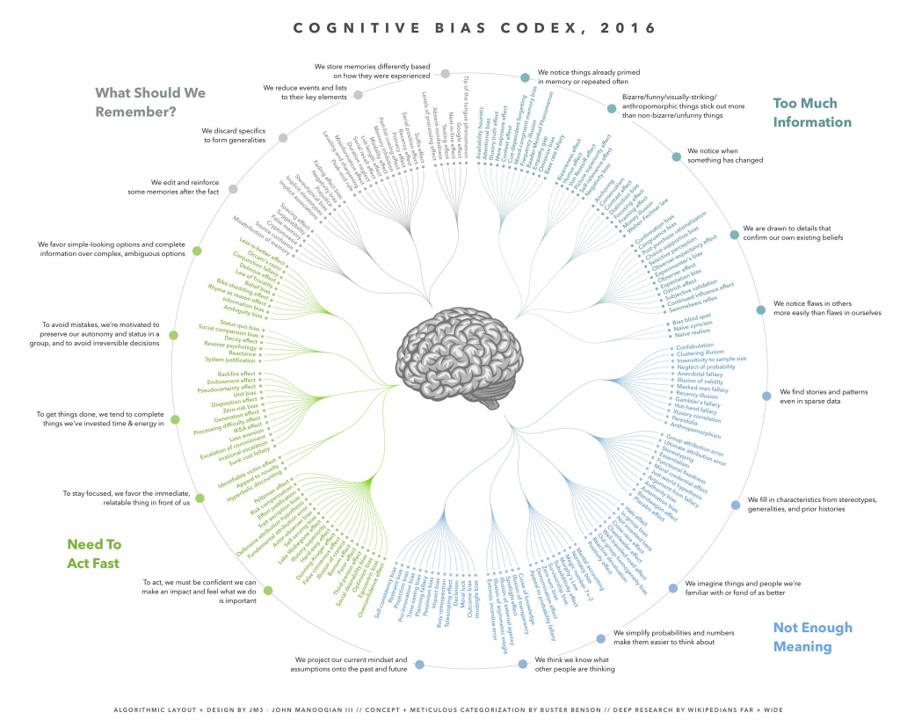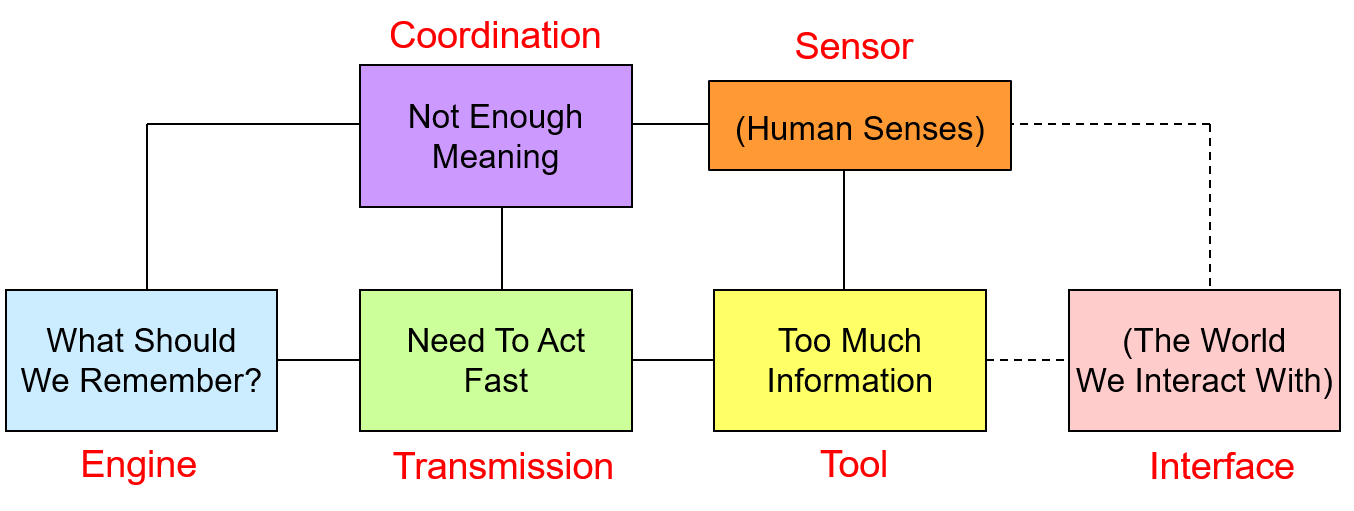Spend more than a couple of minutes on the human cognitive bias Wikipedia page and it become very clear why so many of us struggle to make sense of the world. We’ve basically evolved a 175-ingredient primordial soup of different ways our brain inadvertently screws us up. Now some lovely person has taken the time to translate the original alphabetic listing into something with rather more structure. Buster Benson is the lovely person in question, and I heartily recommend you take a look at how he went about unravelling and making sense of the catalogue: https://medium.com/better-humans/cognitive-bias-cheat-sheet-55a472476b18.
Enter another lovely person, John Manoogian III, who took the time to transform Buster’s hard work into this amazing graphic:

There is always the potential – of course – with these kinds of activity that anyone could run off and build millions of different taxonomies. So the question inevitable arises as to what might make this Cognitive Bias Codex better than any other structure we might choose to assemble?
An early test we apply in the SI research team when it comes to this kind of question is to see how well a model relates back to first principles. Like it or not, we’ve evolved to possess all of these biases for good reasons. They, collectively, serve a purpose. Albeit one that is perhaps better suited to the cave-dwelling time in our history rather than the Fake-News, cut-and-thrust of the 21st Century. But if they serve a purpose, they must also form a system. And if they form a system, they must, collectively, obey the TRIZ Law Of System Completeness.
Which, at first blush suggests a problem. The LoSC says there must be six elements and Buster Benson’s structure only contains four:
1) Too Much Information: information overload sucks, so we aggressively filter. Noise becomes signal.
2) Not Enough Meaning: lack of meaning is confusing, so we fill in the gaps. Signal becomes a story.
3) Need To Act Fast: lest we lose our chance, so we jump to conclusions. Stories become decisions.
4) What Should We Remember: This isn’t getting easier, so we try to remember the important bits. Decisions inform our mental models of the world.
In order, these four elements can be seen to clearly represent the TOOL, COORDINATION, TRANSMISSION and ENGINE of our system. Meaning that we’re missing the INTERFACE and SENSOR parts. But these, of course, are, firstly, the outside world we sense from, and the senses (visual, auditory, kinaesthetic, olfactory, gustatory, etc) we use to do that. Which means we have something that is coherent and consistent with the Law. Like this:

Which in turn means we can start applying some other aspects of TRIZ to see if we can help explain why the human cognitive system is increasingly ill-equipped to cope with modern society. And – perhaps more importantly – what we might start to do about it…
